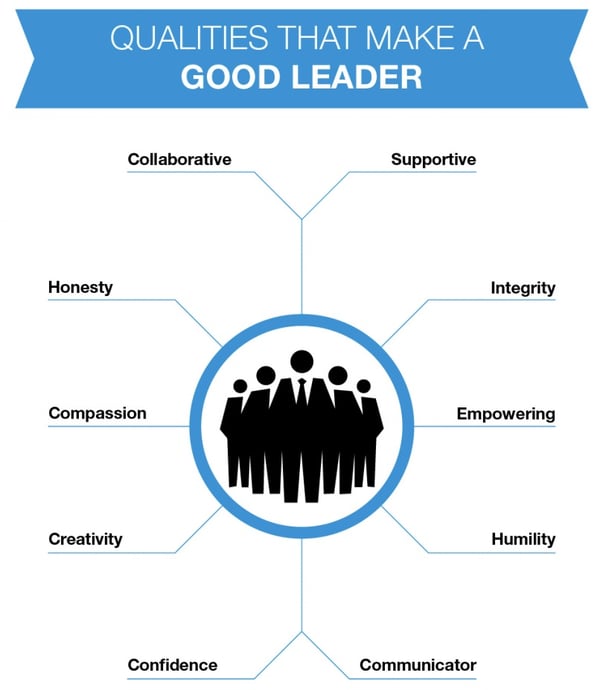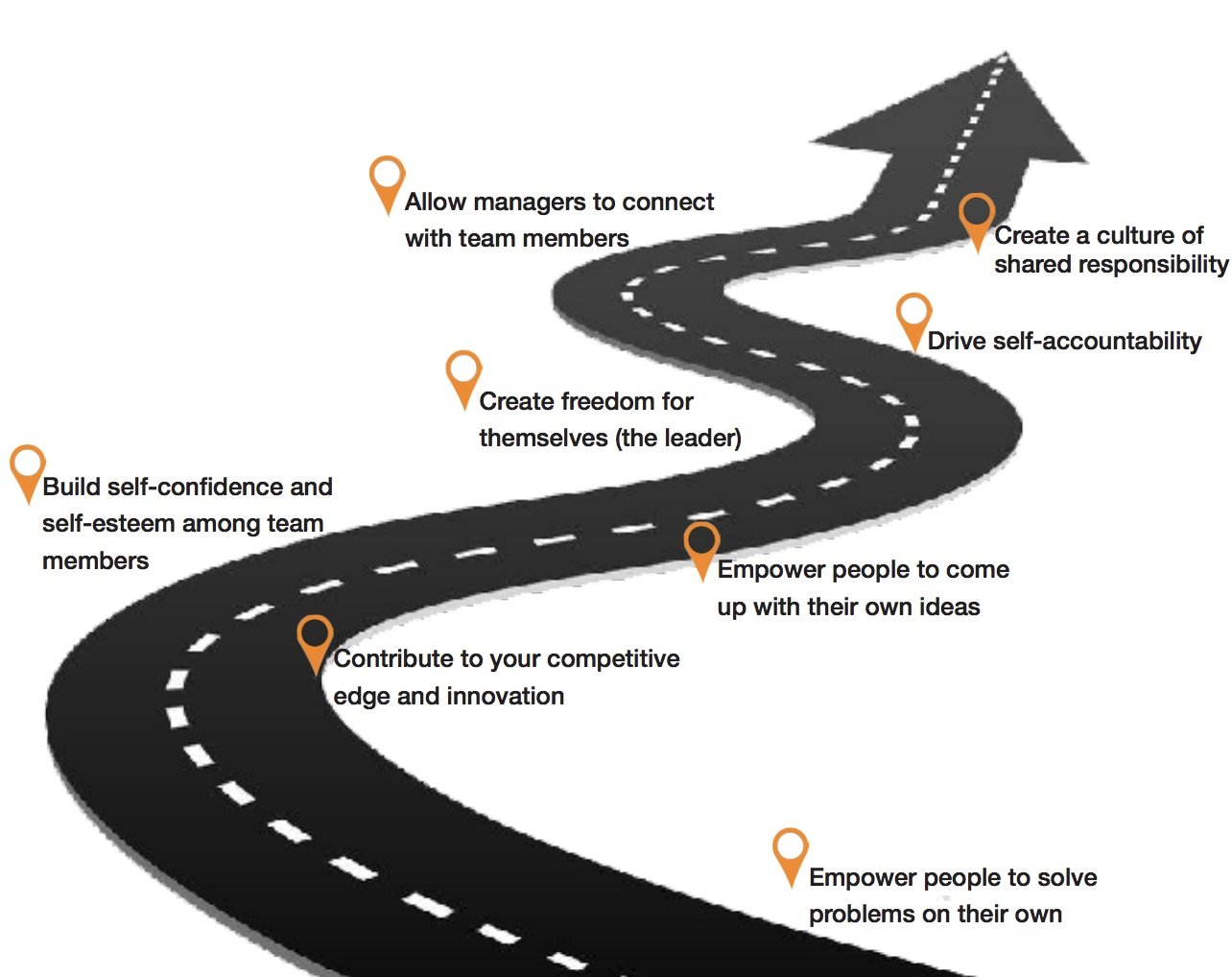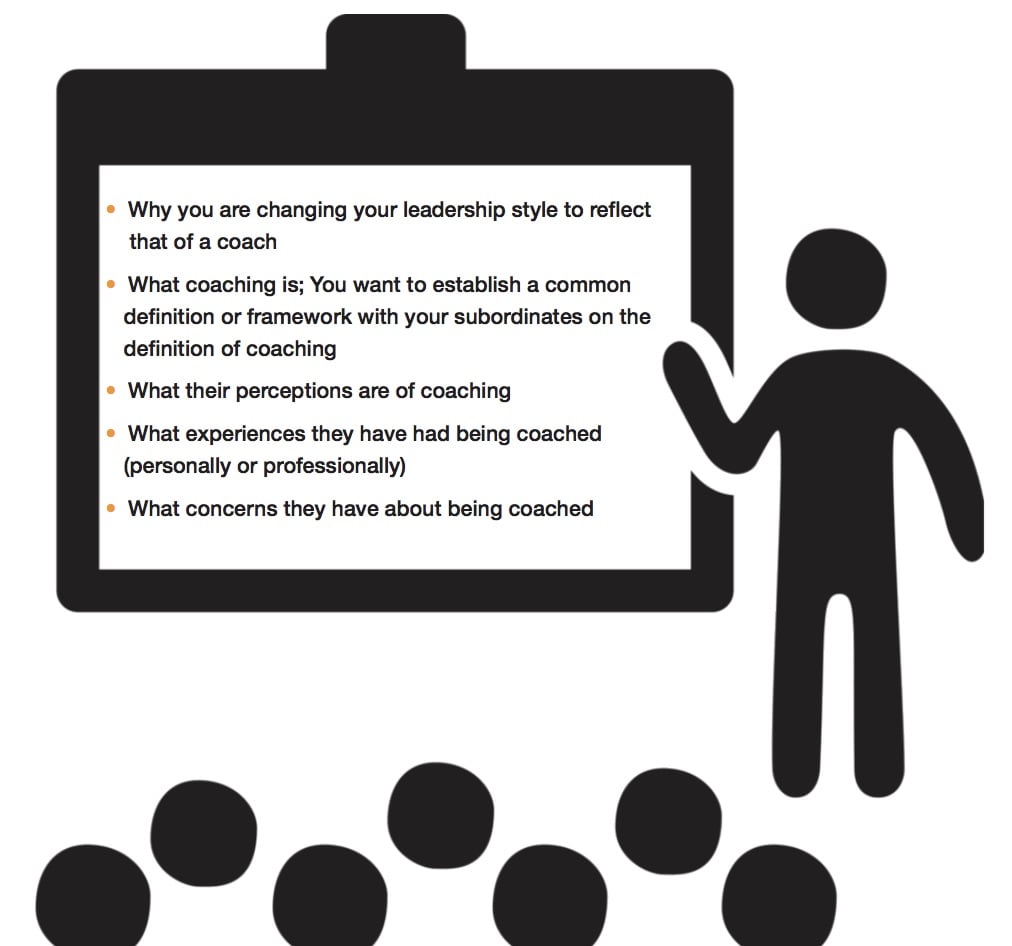How To Create a Culture of Accountability Through Sales Coaching

-
Table of Contents
- Overview
- Coaching VS Managing
- Leading the Questions: The Vehicle Effective Coaching and Empowering Your People
- Setting Expectations for Changing Your Leadership Style
- Engaging Your Team in Coaching Dialogue
- How Much Time Should I Spend on Coaching
- The Power of Coaching Through Observation
- Next Steps
Overview
Today’s sales manager is expected to be part sales superstar who still carries a bag and his or her own personal quota, part CFO, part trainer, part CRM/ATS expert, part “chief problem solver,” and most likely parts of a half-dozen other roles. Sales managers are responsible for:
- Territory management
- Compensation and commission plans
- Customer segmentation
- Sales strategy
- Revenue forecasting
- Goal setting
- Generating reports
- And many other tasks and responsibilities
Suffice it to say, the role of today’s sales manager is diverse and complex.
Prevailing wisdom has always told us that if you want to improve sales performance, you need to train your front line sales people. They are the ones who are engaging in customer facing activity.
As it turns out, sales coaching represents one of the biggest opportunities for improving sales performance and sales effectiveness.
According to research conducted by the Corporate Executive Board, core sales performers could see a performance boost of 19 percent given a significant improvement in the coaching they receive.
Sales coaching, however, is one of the most misunderstood management tools.
Think about it: How many sales managers tell their sales reps they need to get more weekly meetings with new prospects and open more accounts? Most, if not all of them.
Sales managers, as it turns out, are pretty good at telling their people what they want (get more meetings, make more placements, close larger deals, expand account wallet share).
However, sales managers tend to struggle with providing their sales reps with the specific guidance on how they should accomplish these goal or objectives. How many sales managers actually sit down with their reps and guide them step by step on how to ask a prospect for a meeting or how to open new account?
Very, very few.
We're going to take a look at what coaching is and how it differs from managing. We will discuss how sales managers can create a coaching culture amongst their sales team, and how by leading with open ended questions, sales managers can engage in effective coaching dialog.
We provide a guideline for sales managers to use in establishing a coaching framework with their direct reports. I will explain how sales managers can communicate to their direct reports, how and why they are changing their leadership style to reflect that of a coach, and ultimately change their existing sales culture.
Finally, by applying the tips and suggestions outlined here, sales managers will not only see the path for creating a culture of self-accountability based on employee empowerment, but create a coaching culture.
Coaching vs. Managing
Managing is simply the process of communicating vision and strategy. It includes setting objectives, assessing performance and managing and facilitating the administration of those objectives.
Managing is more about “telling” others which tasks to execute and focus on and ensuring people are following processes. Traditional managers tend to focus on exerting control, “hoarding” information and maintaining structure to ensure departments are functioning properly.

Traditional sales managers often want to focus on sales objectives or sales outcomes (number of weekly sales meetings) rather than on driving desired behaviors. These traditional sales managers often say things like “your pipeline is looking dry this month,” or “you need to get your weekly face to face meetings up. What seems to be the problem?”
This really isn’t what sales managers should be after or talking about, because it is focused on business results rather than on behaviors. This behavior is simply not helpful for the sale rep. Being told what to do vs. how to do it are two very different things.
Structured Coaching
As mentioned above, the key to coaching and tapping into one’s individuality is through the use of well thought out, open ended questions.
When leaders lead with questions, they will not only uncover root because issues, but they will challenge assumptions and require people to think and uncover new ideas and possibilities that they would not have come up with otherwise. More importantly, people like the feeling that they have when they discover the answers on their own.
When people come up with their own ideas or solutions, they own it, and when people own an idea or solution, they are far more likely to apply it.
This level of ownership breeds a deeper level of accountability compared to simply exerting control out of authority. It also builds their self-confidence to solve problems and generate solutions on their own.
Coaching is what is needed to both cultivate and sustain these behavioral changes. This, in essence, is what sales leaders are supposed to do. Leading with questions is the vehicle to make it happen.
Structured coaching on the other hand represents one of the biggest opportunities for improving sales performance. Coaching is about tapping into the DNA of an individual and seeking to understand their viewpoint, motivation, goals, aspirations, skill sets and way of thinking through the use of open-ended questions.
Coaching is ongoing and highly customized to the individual and is about challenging, encouraging, supporting and empowering people to achieve higher levels of performance, while allowing them to bring out the best in themselves.
For the coach, it is about leading their people to places they have never been, which often requires pushing them outside of their comfort zone. Coaching and good coaching questions focus on opening people’s minds to the “what if” possibilities and getting them to believe in themselves.
 Tapping Into Individual Sales DNA
Tapping Into Individual Sales DNA
In the end, coaching is about making people more valuable. Sales coaching is not just a huge driver for improving sales performance, but it also plays a major role in retaining employees. People (sales people in particular) don’t leave their company; they leave their manager. Good coaches, however, make people want to stay.
As mentioned above, the key to coaching and tapping into one’s individuality is through the use of well thought out, open ended questions.
When leaders lead with questions they will not only uncover root issues but they will challenge assumptions and require people to think and uncover new ideas and possibilities that they would not have come up with otherwise. More importantly, people like the feeling that they have when they discover the answers on their own.
When people come up with their own ideas or solutions, they own it, and when people own an idea or solution, they are far more likely to apply it.
This level of ownership breeds a deeper level of accountability compared to simply exerting control out of authority. It also builds their self-confidence to solve problems and generate solutions on their own.
Coaching is what is needed to both cultivate and sustain these behavioral changes. This in essence, is what sales leaders are supposed to do. Leading with questions is the vehicle to make it happen.
Avoid Telling Dependency
Many managers think that as the “leader” they’re supposed to have all of the answers. This simply is not true, nor is it even possible.
Leaders who never learn to abandon the role of “chief problem solver” end up creating a culture built on “telling dependency.”
Telling dependency is when team members rely entirely on what the leader tells them to do. In a culture of “yes men” or “head bobbers,” where team members rely on the leader to tell them what to do, the leader robs his or her people of their creative thinking, decision making ability and the ability to solve problems and create solutions. They have become dependent upon the leader to always answer their questions and tell them what to do.
Ironically, the leader has also robbed people of self-accountability, the very behavior all leaders want their employees to own and embrace. When team members can’t solve their own problems or come up with solutions on their own, the leader is required to step in.
The leader thus becomes the bottleneck for fiscal growth and scalability, as well as people development, because all solutions run through the leader. Perhaps the biggest problem with telling dependency is it is exhausting for the leader, because it requires him or her to do all of the work.
Roadmap to Results
Sales managers can break this cycle by changing their leadership style to reflect one that is indicative of leading with questions.
When sales managers and leaders lead with questions they:

You can’t just flip on the switch and expect to change your leadership style overnight. And you certainly can’t expect people to follow you without first communicating the change and reasons for the change.
The first step is to set new expectations of your team members so that they understand what your intentions are and what is in it for them. Remember, people don’t care how much you know until they know how much you care. If you don’t communicate your intentions and what you’re changing, and why and what is in it for them, then people will automatically respond with fear. Setting expectations is absolutely critical.
How should you introduce this change in your leadership style? Some leaders communicate this change in a team meeting while others communicate it in one-on-one meetings. There is no right or wrong way just as long as you communicate your intentions, why you are making the change and what they (your team) can expect.
Clear communication is important to avoid collateral damage later, when your team is left to analyze and interpret your personal agenda.
When communicating the reasons for changing your leadership style, you can share with your team members that you recognize that the role of being a leader has evolved and that you are trying to evolve with it. As such, you can simply share with your team members that you are trying to change your style to be more of a coach.
Explain to them why you’re making this transition and how it will benefit them. Also explain to them how it will impact your relationship with them.
You want to set the tone and expectations for how your interactions with team members as a “coach” will differ from what it has been like as a “manager.” This prepares them for change. If you don’t do this, it will catch team members off guard and confuse them and/or send a mixed message.
Gain Alignment with Your Direct Reports
The goal is to get buy-in and alignment between you and your team members around this change in your leadership style. Start by scheduling a time and place to meet with each team member individually. This is not a five-minute “on the fly” conversation. You want them engaged in the meeting.
Expecting them to drop what they were doing or to adapt to your schedule on the fly often results in them resisting your message or simply appeasing you, rather than being genuinely open, interested and willing to engage in meaningful dialogue.
The purpose of the meeting is for you and your subordinates to have a conversation about:

You will want to craft your message on how you’re going to open the conversation and get your direct report to engage in dialogue about coaching. Here, you will want to set expectations about what both you and your direct reports can expect as well as use questions to help drive the dialogue around how they want to be coached in a way that will be most valuable to them.
You might say something like this:
“My intention and goal is for you to achieve your career goals and aspirations. But I recognize that as the leader, I need to change my leadership style so that I can do a better job of developing and maximizing your full potential. To use a sports analogy, the coach is always there pushing, motivating, encouraging and supporting their players to be at the top of their game.
I have come to the realization that to be a better leader I need to play the role of a coach so that I can develop you in a way that will enable you to achieve even greater success. This change is new to me and it will be new to you which means we’re going to experience a learning curve.
Keep in mind that it probably will not be perfect the first time. What is most important is that you understand my intentions are to support you, encourage you and help you achieve the level of success you’re striving for.”
“I wanted to take some time to talk about coaching and your perception of coaching so that you and I can come up with mutually agreed upon definition and framework for our coaching. From there we can set some measurable (SMART) goals and parameters around our coaching that will be most valuable for you. How do you feel about discussing this?”
Questions to Establish a Coaching Framework
- How would you define my job as your supervisor?
- How would you define the role of a coach?
- Have you ever been coached before? What did you like? Dislike?
- What would you expect from me as your coach?
- What would you like to cover or accomplish during our coaching sessions that would be most important to you?
- How would you feel about scheduling coach calls on a weekly basis to strategize on your ac counts, contacts and opportunities?
- Is there anything I shouldn’t do when coaching you? Anything you mind demotivating?
Finally, ask your subordinate, “Can I share with you how I envision our coaching sessions, so you can understand my style and know what to expect from me, to ensure it is in alignment with your expectations?”
Your First Coaching Session
Now that you have met with each of your direct reports in a one-on-one meeting to establish your coaching framework, expectations and measurable goals, it is time to schedule your first coaching session.
Scheduled coaching sessions are always 100 percent about your direct report. Do NOT come with a predetermined or underlying agenda.
Coaching sessions are always for your people to come with their own agenda, whether it be to discuss their personal goals, their career or what they need to do or learn to become more effective and valuable. It is their time to express how they feel.
Remember, developing a coaching relationship with your direct reports is built from trust. If your direct report feels as if you have a hidden agenda you will fail to establish trust and the process will feel awkward and superficial. Your direct report will most likely give you lip service and simply tell you what they think you want to hear.
When asking questions it is important to come from a “learning mindset” versus a “judging mindset.” Leaders with the learning mindset tend to be optimistic and presuppose new possibilities, a hopeful future and sufficient resources. They exude possibilities and hope.
The judging mindset, on the other hand, is reactive and tends to focus on the past, not as a means of learning but to apportion praise or, more likely, blame.
Learning Questions
- What is good or useful about this?
- What possibilities does this open up?
- What can we do about this?
- How can we stay on track?
- What can we learn from this?
Judging Questions
- Why is this a failure?
- What is wrong with you?
- Whose fault is this?
- Why can’t you get it right?
At this point you might be thinking, “Wow, I have seven direct reports, when in the heck am I going to find time to schedule these coaching sessions with my reps? I have no time as it is!”
Remember, leading with questions is going to give you freedom.
When you empower people to make decisions on their own, you no longer have to get into the details of every situation and solve every problem. Imagine how much free time you would have if you didn’t have to solve every little problem in your office?

The frequency or cadence of your coaching sessions will vary from rep to rep. Again, coaching is highly customized to each individual.
If you have a sales rep who is really struggling, then you may need to schedule coaching sessions with him or her daily. On the other hand, you may have a consistently strong performer who needs coaching once or twice a month.
For core (average) performers however, you should be facilitating, on average one, one hour coaching session per week per individual. As you get going, you will get a feel for how frequently your coaching sessions should take place with your direct reports.
Keep in mind that up to this point I have been talking about coaching in the context of one-on-one meetings. Sales managers must also engage in active coaching and observation.
Active coaching and observation is where the coach is observing the sale rep in live, active sales calls (on the phone and in client facing meetings). Let me use a sports analogy to illustrate.
During a game, say football or basketball for example, coaches stand on the sidelines bent over watching the game. Why do they do this? So they can watch and observe how their players perform.
If I’m a football coach I’m looking at my player’s stance, their pad level, how they get out on their blocks, foot work, and so forth. This is observation. In the sports world, players need their coach to observe how they’re performing because players can’t see their weaknesses or blind spots when they’re engaged in a game.
When players run off the field to the sidelines, you always see the coach running up to the player to share a few words. Combined with observation, this is active coaching.
Sales people need this same kind of coaching because like players on a football team, sales people can’t see their blind spots. Actively coaching through observation answers the question, “Why is my player performing the way they’re performing?”
This insight is far more valuable to improving sales performance and sales effectiveness than the data that comes from your CRM or ATS application. Data from your CRM/ATS application simply tells you what is happening.
When sales managers engage in active coaching, they learn why what is happening, is happening.
Conclusion
At this stage, you:
- Understand the difference between managing and coaching
- Know that leading with well thought out, open-ended questions is the vehicle to effective coaching.
- Gained alignment with each member of your sales team
- Communicated the reasons for why you are changing your leadership style and what your subordinates stand to gain from that change
- Engaged all of your team members in your initial coaching dialogue
It is absolutely critical that you and your subordinates commit to a coaching schedule and that you stick with it.
If you skip a meeting or show up late, your reps will start to assume this is just another “flavor of the month” management gimmick. Sticking to a schedule requires careful planning and preparation on your behalf.
Just like sales people must prepare for sales calls by planning out how they will open and close a meeting and plan what they will say and questions they will ask, sales managers must do the same.
This doesn’t mean that you come with a pre-determined agenda, but you do need to be prepared to ask open ended questions to guide the conversation and empower your reps to come up with solutions on their own.
Download Your Personal Copy of This Guide Now!
Learn how core sales performers could see a performance boost of 19% or more given an improvement in the training they receive.

Next Steps
I hope you’ve found this guide insightful, thought-provoking, and most of all, useful. To learn more about how Menemsha Group enables sales professionals with the skills, knowledge and tools to book more sales meetings and make winning sales behaviors repeatable and scalable, download our eBook, Menemsha Group’s Sales & Recruiter Enablement Roadmap for Scalable Growth. In the eBook you will discover the tools, technologies, techniques, methodologies, content and processes we employ to help staffing and recruiting firms attain scalable, repeatable success. Download it today!



